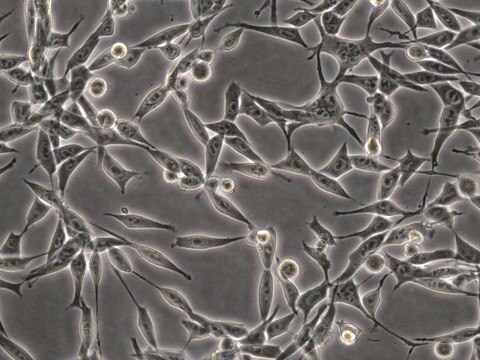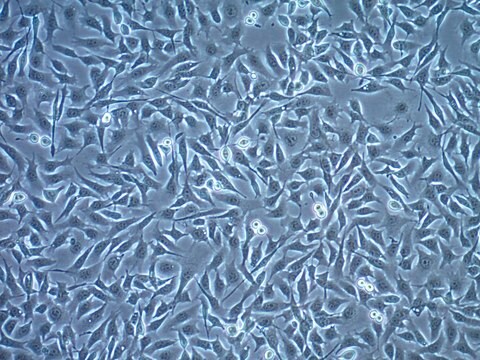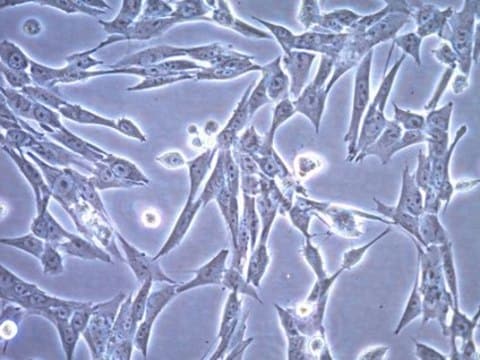SCC145
ID8 Mouse Ovarian Surface Epithelial Cell Line
Mouse
Synonym(e):
ID-8, ID8/MOSEC
About This Item
Empfohlene Produkte
Produktbezeichnung
ID8 Mouse Ovarian Surface Epithelial Cell Line, ID8 mouse ovarian surface epithelial cell line is frequently used as a syngeneic mouse model for human ovarian cancer.
Biologische Quelle
mouse
Methode(n)
cell culture | mammalian: suitable
Versandbedingung
liquid nitrogen
Allgemeine Beschreibung
In 2000, an immune-competent syngeneic mouse model for ovarian cancer was reported . Mouse ovarian surface epithelial cells (MOSEC) isolated from C57BL/6 mice were found to spontaneously transform into malignant tumorigenic cells following prolonged passages in vitro . Late passage MOSEC lost the classical “cobblestone” contact-inhibited in vitro properties reminiscent of normal epithelial cells and instead grew as multi-layered cell clusters indicative of transformed cells. Intraperitoneal injection of late passaged MOSEC into athymic and normal, immune-intact, syngeneic C57BL/6 mice gave rise to tumors throughout the abdominal cavity like those observed in women with Stage III and IV cancer . MOSEC are thus useful syngeneic mouse models to study the role of the immune system in the establishment and progression of ovarian cancer.
Qualität
• Cells are tested negative for infectious diseases by a Mouse Essential CLEAR panel by Charles River Animal Diagnostic Services.
• Cells are verified to be of mouse origin and negative for inter-species contamination from rat, chinese hamster, Golden Syrian hamster, human and non-human primate (NHP) as assessed by a Contamination CLEAR panel by Charles River Animal Diagnostic Services.
• Cells are negative for mycoplasma contamination
Sonstige Hinweise
Lagerklassenschlüssel
12 - Non Combustible Liquids
WGK
WGK 1
Flammpunkt (°F)
Not applicable
Flammpunkt (°C)
Not applicable
Analysenzertifikate (COA)
Suchen Sie nach Analysenzertifikate (COA), indem Sie die Lot-/Chargennummer des Produkts eingeben. Lot- und Chargennummern sind auf dem Produktetikett hinter den Wörtern ‘Lot’ oder ‘Batch’ (Lot oder Charge) zu finden.
Besitzen Sie dieses Produkt bereits?
In der Dokumentenbibliothek finden Sie die Dokumentation zu den Produkten, die Sie kürzlich erworben haben.
Unser Team von Wissenschaftlern verfügt über Erfahrung in allen Forschungsbereichen einschließlich Life Science, Materialwissenschaften, chemischer Synthese, Chromatographie, Analytik und vielen mehr..
Setzen Sie sich mit dem technischen Dienst in Verbindung.








